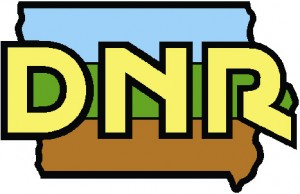
During these times, the Iowa Department of Natural Resources (DNR) can work within its authority to give landowners emergency authorization for hazardous and detrimental conditions. This emergency work can be done after consultation with Iowa DNR field employees and an on-site visit. Landowners are still required to obtain the proper permits and work with other entities having jurisdiction on lakeshore construction such as county and cities.
Most shoreline issues can be handled through the normal permitting process, but emergency situations should be reported the DNR’s Regional Headquarters in Spirit Lake at 712-336-1840.
“Often times the property owners reach out to us for approval and consultation and before they have a proper plan in place, they receive their permit in hand and do not need to use this exception,” said Mike Hawkins, DNR fisheries biologist. “But, this is in place to help those that truly need to start the process immediately. I caution property owners to shop around and be sure to line up knowledgeable contractor(s) that can perform the work before rushing the process.”
Meanwhile, the Emergency Management Commission in Dickinson County put into place a 600-foot no-wake zone along shore of East & West Lake Okoboji, Upper and Lower Gar, Minnewashta Lake, Silver Lake at Lake Park and Center Lake, effective immediately.
The water level on Iowa’s Great Lakes is more than two feet above crest, which is over topping docks, damaging shorelines and causing erosion. The no-wake zone will be in effect until further notice.
DNR conservation officers will advise boaters of the no-wake zone and work on posting signage at the public boat ramps. The 300 foot buoys will not be moved to reflect the 600 foot zone, so boaters are asked to use the 300 foot buoys as a reference to double their distance from the shore before increasing speed above 5 mph.
“Boaters that don’t obey the 600 foot no-wake zone can cause significant lakeshore damage and potentially impact critical infrastructure during with these high water levels,” Mike Hawkins, DNR fisheries biologist. “Boaters are asked to be mindful of their wake on all lakes.”






